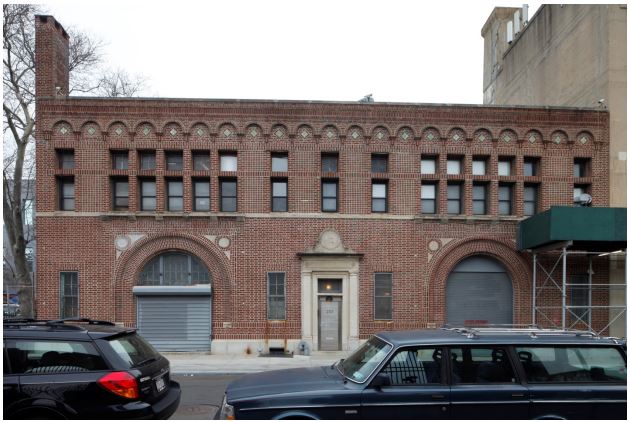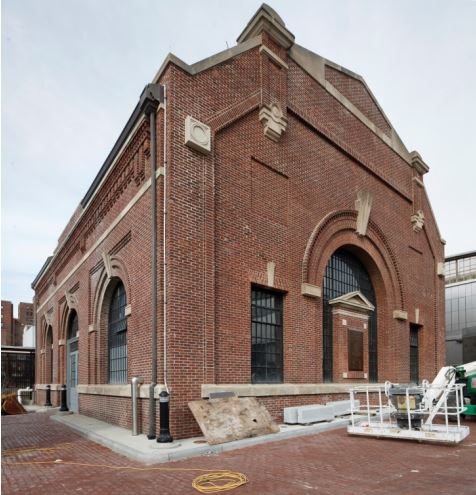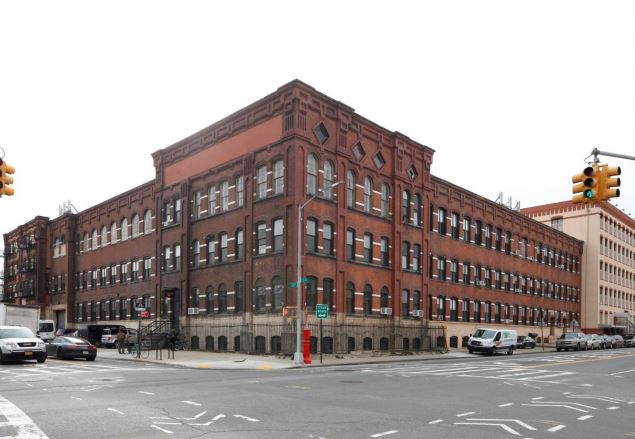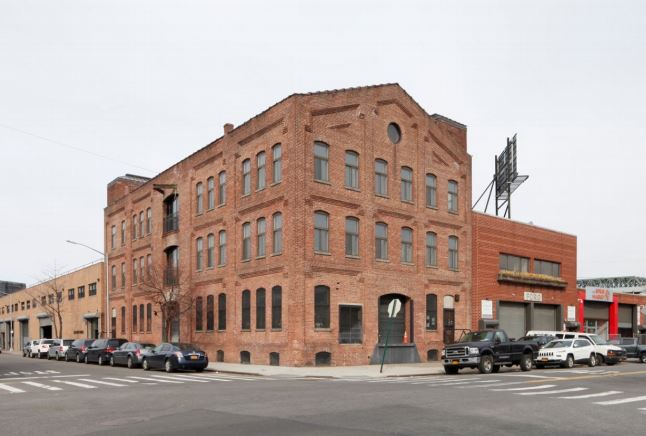Landmarks in Gowanus
The Historic Districts Council has been working with Gowanus since 2011 when we featured it as one of our first annual Six to Celebrate neighborhoods. At that time, we worked closely with a community group, Friends and Residents of Greater Gowanus, which had formed in response to immense real estate pressure resulting in the erosion of their neighborhood character through demolitions of significant historic buildings, gentrification, and tenant/resident displacement. As a result of our collaboration, a historic resources survey was completed and Gowanus was determined eligible for the National Register of Historic Places with the New York State Historic Preservation Officer’s full support in 2013.
Throughout 2014-2015, HDC participated in Councilmember Lander’s “Bridging Gowanus” project and submitted a statement that called for historic preservation to be a part of any future comprehensive neighborhood plan. In fact, the final “Bridging Gowanus” report references our Gowanus guidebook. A word about the guidebook, although it was never meant to be a comprehensive list of significant historic resources in the area, even the limited inventory of structures highlighted includes a number of worthy buildings which have been demolished subsequent to its 2012 publication. The danger to this neighborhood is very real.
When the City of New York announced the Gowanus rezoning in September 2016, HDC called on the LPC to designate historic districts and/or landmarks prior to the rezoning. HDC staff participated in the Public Realm working group, founded the Gowanus Landmarking Coalition during the rezoning framework process and identified several buildings worthy of preservation, five of which the LPC has committed to protecting in 2019. We greatly appreciate the LPC taking action prior to the rezoning, we thank the agency for communicating the research staff’s rigorous methodology for their choices, and we urge the Commission to pursue other buildings on the list, especially the T.H. Roulston Complex buildings (70-124 9th Street), and the Ice House & Brewing Complex (401-421 Bond Street). As stated earlier, Gowanus has a limited universe of significant historic structures and they are disappearing faster than can be imagined.

Item 1
LP-2637
BOROUGH OF BROOKLYN
ASPCA BROOKLYN OFFICE, SHELTER, AND GARAGE (ASPCA ROGERS MEMORIAL BUILDING)
233 Butler Street (aka 231-237 Butler Street), Brooklyn Tax Map Block 405 Lot 51 in part, and a portion of the Butler Street sidewalk in front of said lot
At the time of its opening in 1913, the American Society for the Prevention of Cruelty to Animals Brooklyn Office, Shelter, and Garage (also known as the ASPCA Rogers Memorial Building) housed the most expansive and comprehensive animal shelter in the world. For 66 years, this building served as the Brooklyn headquarters of the ASPCA. Here, the organization cared for and fought to protect domesticated animals from abandonment and abuse, specifically with regard to horses which were a heavily-mistreated mode of transportation at the time. It is significant that the ASPCA chose this neighborhood for this building. One hundred years ago, caring for horses was considered as noxious a use as auto-repair is considered today; it was a necessary service but you certainly wouldn’t want to live next to it. It only made sense to consign animal care to the same liminal space as those other necessary but unpleasant businesses such as fuel storage and manufacturing: the Gowanus.
In addition to starting campaigns for slaughterhouse reform, anti-cruelty laws, and bans on cock fighting, the ASPCA ran programs for children, sponsored lectures, facilitated thousands of pet adoptions, and operated a large veterinary clinic. The site was also equipped with rescue ambulances that allowed for the transporting of injured and maltreated horses to this facility.
Today, it exists as the finest surviving ASPCA property in New York City. Not only does it merit architectural recognition with its extraordinarily well-preserved fenestration, which features a relief of the ASPCA seal depicting the Angel of Mercy intervening to protect a horse from its abusive driver at the main entrance, but its historical significance lies heavily in the fact that this building housed the country’s first and the world’s second animal-welfare organization. Serving as a tangible link to the history of this renowned organization, the ASCPA Rogers Memorial Building deserves to be safeguarded with landmark protections.

Item 2
LP-2638
BOROUGH OF BROOKLYN
GOWANUS FLUSHING TUNNEL PUMPING STATION AND GATE HOUSE
196 Butler Street
The Historic Districts Council enthusiastically supports the designation of the Gowanus Flushing Tunnel Pumping Station and Gate House at 196 Butler Street. Integral to the history of the Gowanus Canal and, subsequently the history of the Gowanus neighborhood, this pumping station and gate house were created as a part of a substantial infrastructure plan to improve the over-polluted waterway in the early 20th century.
When the Flushing Tunnel opened after its completion in 1911, this project was considered one of the most ambitious and extensive water pollution clean-up attempts ever made in the United States, with only two similar lower-scale projects being undertaken in Milwaukee and Chicago. Still in active use today, with its largely-intact Colonial Revival style façade featuring Secessionist details, the Gowanus Flushing Tunnel Pumping Station and Gate House are historically and architecturally meritorious. HDC would prefer to see the proposed landmark site expanded to encompass the entirety of the actual property lot. While the utilitarian accessory buildings are not especially significant, the brick structure is quite handsome and provides an appropriate street frontage, especially when facing the proposed landmark ASPCA building. There was a great deal of discussion about preservation tools during the neighborhood planning process but it remained largely in the abstract. Absent any other tool, landmark designation is the only regulation which would allow substantial design review of any new construction. This is a site where sensitive, contextual urban design would greatly benefit the neighborhood, so we urge the LPC to consider including the entire site in the proposed landmark designation.

Item 3
LP-2639
BOROUGH OF BROOKLYN
BROOKLYN RAPID TRANSIT COMPANY CENTRAL POWER STATION ENGINE HOUSE
153 2nd Street (aka 322 Third Avenue, 340 Third Avenue)
This enormous eight-story Romanesque-Classical Revival style building at 153 Second Avenue served as the powerhouse for the Brooklyn Rapid Transit Corporation (or BRT), which owned every steam railroad, elevated line and streetcar in Brooklyn at the turn of the 20th century. Here, coal fed from the Gowanus Canal bank via an elevator to a cement tunnel connected to the building was burned in order to generate electricity for all of the trains operating in the borough.
Today, the BRT Central Power Station Engine House serves as a remnant of both the industrial past of the Gowanus neighborhood and the history of mass transit development in New York City. While the building is but one largely intact remnant of what originally was a sizeable complex, it requires much needed protections awarded with designated landmark status, especially considering the ambitious redevelopment plans currently proposed. The Historic Districts Council eagerly supports the designation of this distinguished building.

Item 4
LP-2640
BOROUGH OF BROOKLYN
SOMERS BROTHERS TINWARE FACTORY (AMERICAN CAN COMPANY)
238-246 3rd Street (aka 232-236 3rd Street, 361-363 Third Avenue, 365-379 Third Avenue)
The Somers Brothers Tinware Factory (later the American Can Company) is deeply embedded in the fabric of Gowanus’ industrial history. Designed by Daniel Somers of the Somers Brothers, the facility was powered by oil pumped from iron tank boats right on the Gowanus Canal. The site, which is a plant complex consisting of multiple adjoining factory buildings, displays a combination of well-preserved unique architectural elements, from its four diamond shaped openings (the majority of which have retained their original Queen Anne-style sashes) to its abstracted cornice.
While decorated tinware was manufactured in the buildings directly at the corner of Third Avenue and 3rd Street, it is the southeastern section of the complex that housed perhaps a more noteworthy industrial operation. It was within this section of the complex that the Somers Brothers became the first company to manufacture tin plate in New York State in 1891. After the enactment of the McKinley Tariff of 1890, the import duty on tin plates were raised from 30% to 70% in an effort to spur American tin production. Consequently, as reported in The Brooklyn Daily Eagle, the Somers Brothers built this additional building and created Somerton Tinplate Works, pioneering tin plate manufacturing in the state. The Somers Brothers also exhibited their tinware, made with their own tin plate manufactured in this facility, at the World Columbian Exposition in 1893 as a member of the newly-organized Associated Manufacturers of the United States of America. In this specific portion of the factory complex, which has been curiously left out of the potential landmark site, significant changes in New York’s industrial history took place.
The Somers Brothers Tinware Factory is a testament to and an expression of the industrial character that has defined the Gowanus neighborhood for over a century. The Historic Districts Council supports the landmark designation of the Somers Brothers Tinware Factory, but urges the Commission to recognize the contentious fact that arguably the most historically important portion of this factory complex is being cut out of the landmark site. HDC understands that the southeastern section has undergone alterations at its main façade, but given its extreme historical merit, this portion of the complex deserves to be considered for designation along with the rest of the site before it get demolished for future development.

Item 5
LP-2641
BOROUGH OF BROOKLYN
MONTAUK PAINT MANUFACTURING COMPANY BUILDING
170 2nd Avenue
At the time of the Montauk Paint Manufacturing Company Building’s construction in the early 20th century, Brooklyn was considered to be the country’s foremost paint manufacturing hub. The borough housed some of the oldest and most successful paint factories in the United States, the Montauk Paint Manufacturing Company Building being one of these.
Between 1942 and 1951, the building became home to lessee Norge Sailmakers Corp., a company that manufactured covers and sails for yachts and pleasure crafts. As Norge Sailmakers Corp. was well-known for having one of the largest, if not the largest, sail lofts in the country, the building is also widely referred to as the Norge Sailmakers Building.
Except for the reconfigured window opening on 2nd Avenue, window and door replacements, and some infill at entrances, this impressive American Round Arch style building remains extraordinarily intact. Like the four other sites being proposed for landmark designation today, the Montauk Paint Manufacturing Company Building is a fine example of beautifully preserved industrial architecture and its existence helps to convey the story of the growth and prominence of the Gowanus neighborhood. We would especially like to thank the Landmarks Preservation Commission for bringing this building forward for landmark consideration as it falls outside of the rezoning area. As such, the Historic Districts Council is in full support of designating the Montauk Paint Manufacturing Company Building as an individual landmark.



